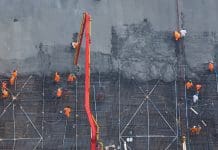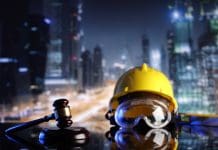The Grenfell Tower inquiry has been told that a litany of safety breaches including a faulty firefighting lift, more than 100 non-compliant fire doors and a “stay put” policy that failed, all added to a “culture of non-compliance”
A report by Dr Barbara Lane, a leading fire safety engineer who was commissioned by the inquiry to investigate fire protection measures and the spread of flames and smoke, concluded there was “a culture of non-compliance” at the tower.
Her report amounted to a series of failings including the admission that the pipe system to get water up the 24-storey block to fight the fire could not cope and was overloaded, leaving the upper floors, where most people died, vulnerable.
Fire doors to flats, which should have resisted fire for 60 minutes, only lasted as little as 20 minutes.
The cladding system was “substantially to blame for the tragedy” and produced toxic smoke that delayed the firefighters because they had to wear breathing apparatus and “the ultimate consequence was a disproportionately high loss of life”, she said.
Her interim conclusions were among five expert reports released on the eighth day of the inquiry – and the first to hear detailed expert evidence.
Dr Lane said: “There was a total failing of the principle of stay put,” the strategy that resulted in residents being told to remain in their flats. She said this had become ineffective by 1.26am. Yet the policy remained in place for another hour and seven minutes.
A major incident was declared at 2:06am and yet the stay put strategy remained in place until 2:47am, by which time the lobbies were filled with thick and “boiling hot” smoke allowing very low and sometimes zero visibility.
Dr Lane condemned the cladding, which she said was “non-compliant with the functional requirement of the building regulations”.
She said: “I have found no evidence yet that any member of the design team or the construction ascertained the fire performance of the rainscreen cladding system materials, nor understood how the assembly performed in fire. I have found no evidence that building control were either informed or understood how the assembly would perform in a fire.
“Further, I have found no evidence that the [tenant management organisation] risk assessment recorded the fire performance of the rainscreen cladding system, nor have I found evidence that the LFB [London fire brigade] risk assessment recorded the fire performance of the rainscreen cladding.”
Dr Lanes report highlighted:
- A “number of non-compliances” in relation to fire safety signifying a culture of non-compliance at Grenfell Tower
- The lifts failed to perform effectively, hindering the transportation of firefighting equipment and creating an “unnecessary risk” to residents who could not use it to escape
- The fire service had to pump its own water into Grenfell Tower – the building’s “dry fire main” system was “non-compliant” with guidance at the time of construction and is “non-compliant with current standards”
- The smoke control system did not operate correctly, reducing the ability to vent smoke from the lobbies on each floor of Grenfell Tower which could have improved both escape and firefighting conditions
- Existing building guidelines and tests allow “obvious dangers” to be incorporated into cladding systems routinely.








![[Video] Enhancing safety with fire doors: A case study of Marina Care Home](https://www.pbctoday.co.uk/news/wp-content/uploads/2025/06/maxresdefault-218x150.jpg)




